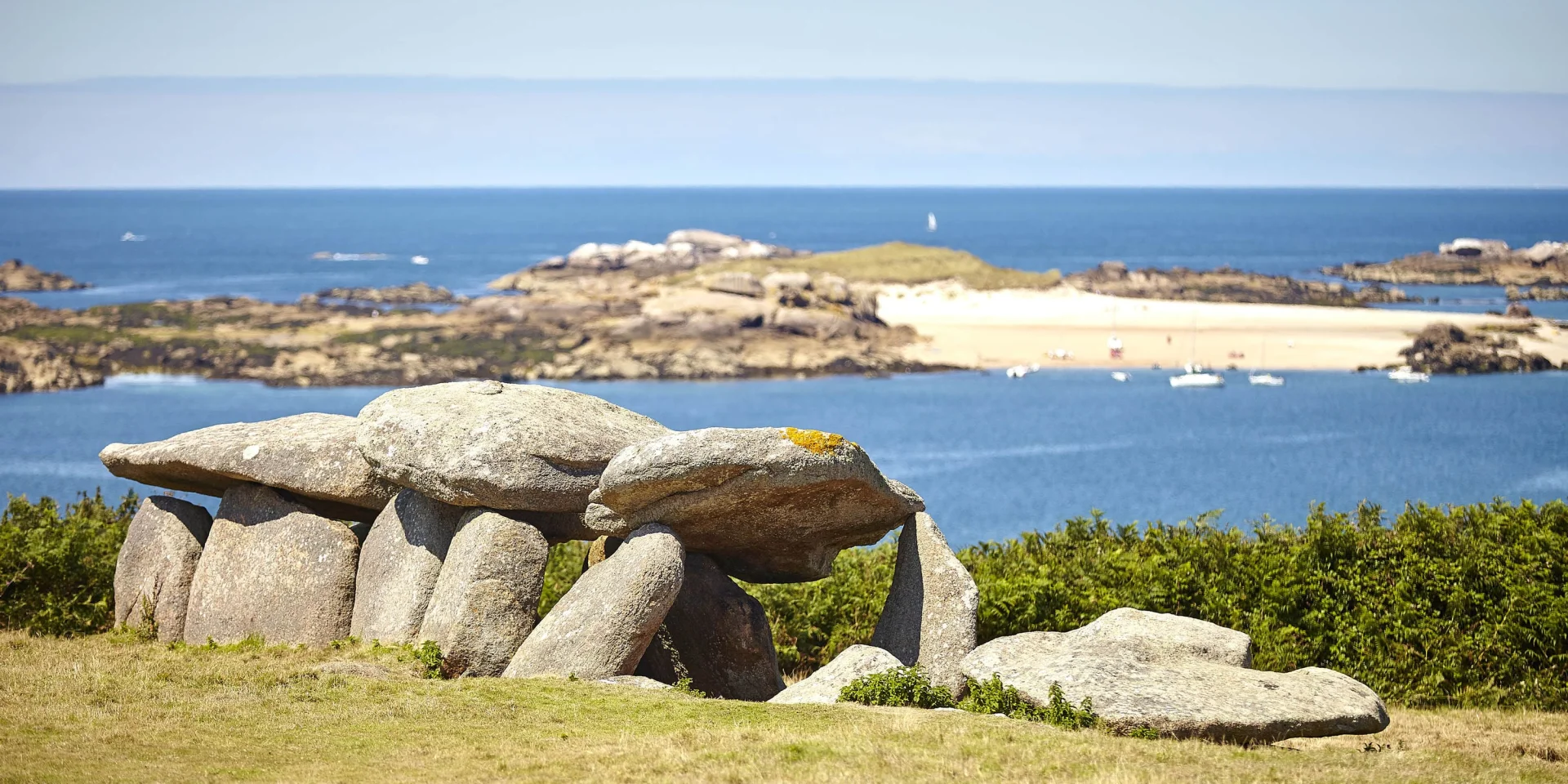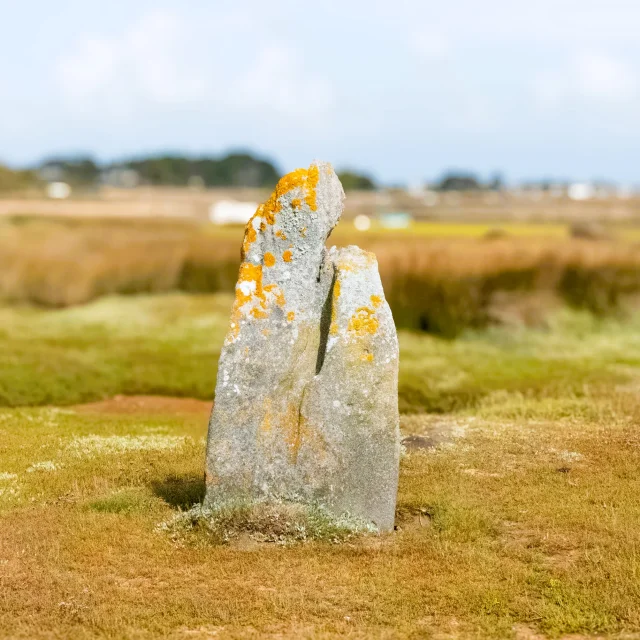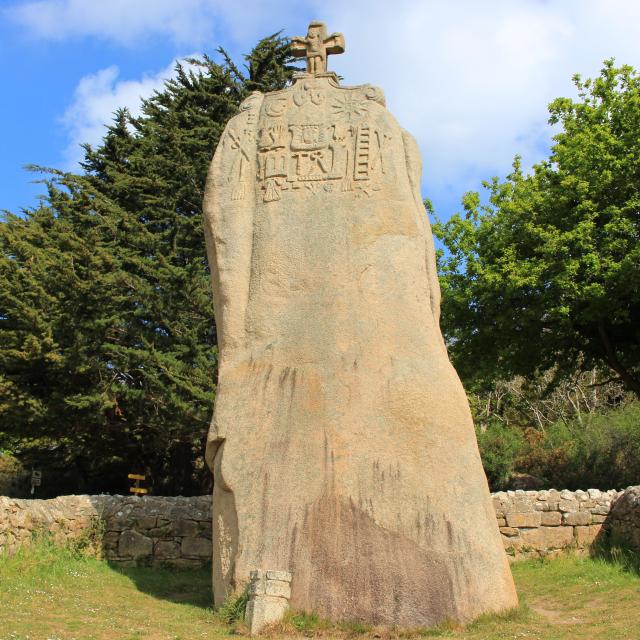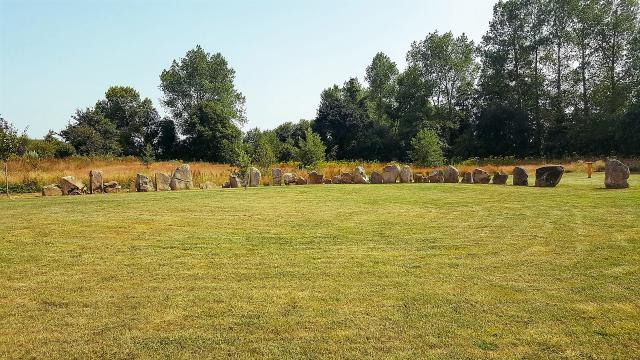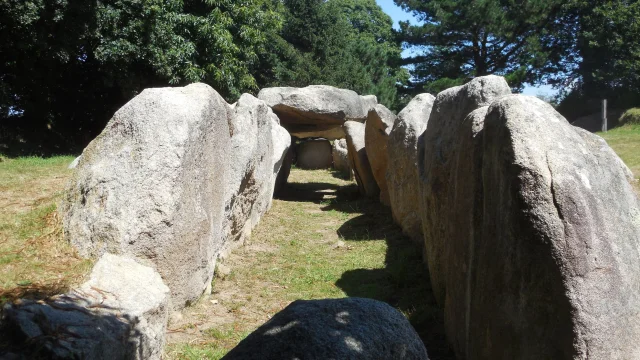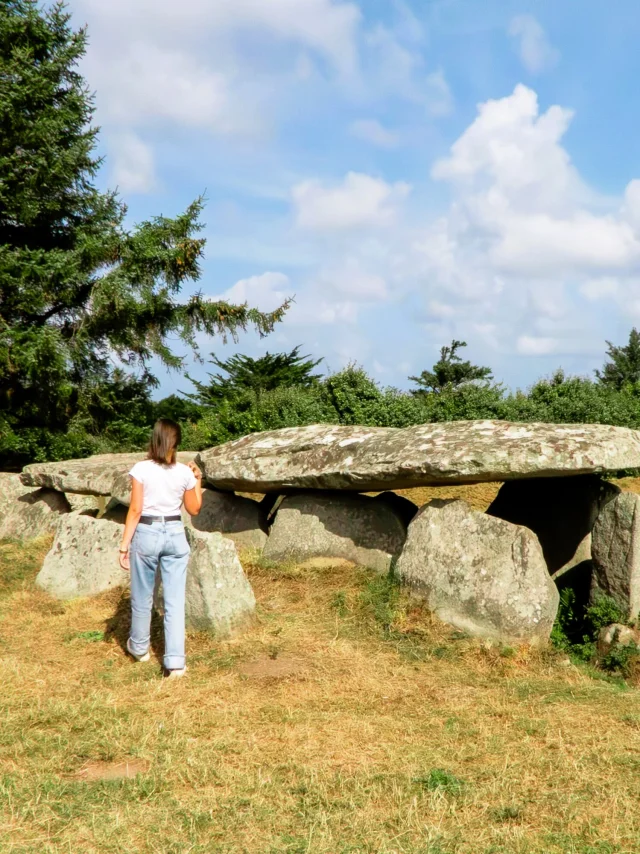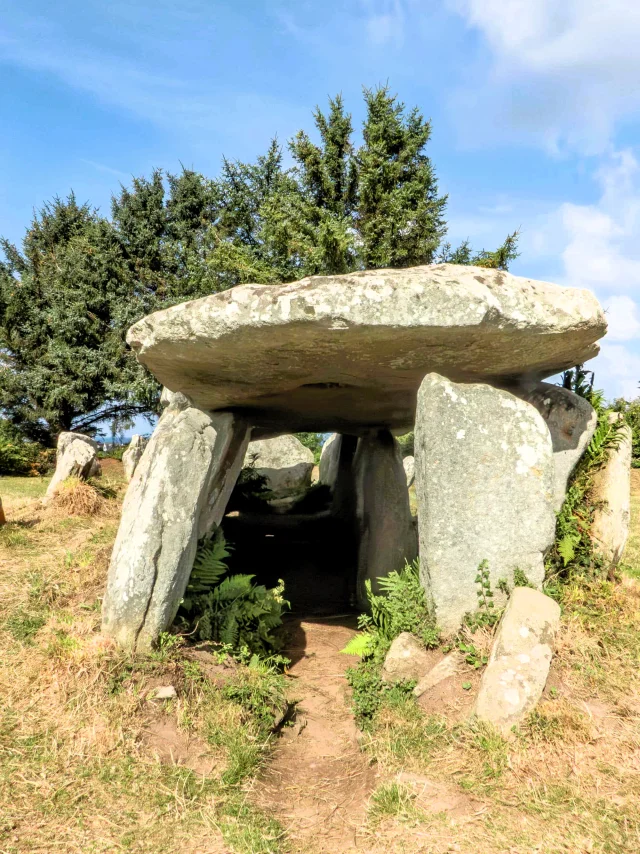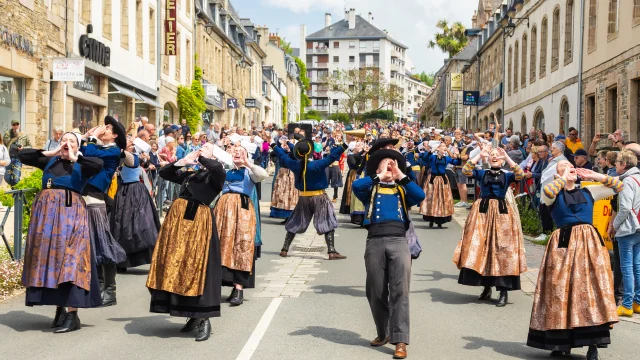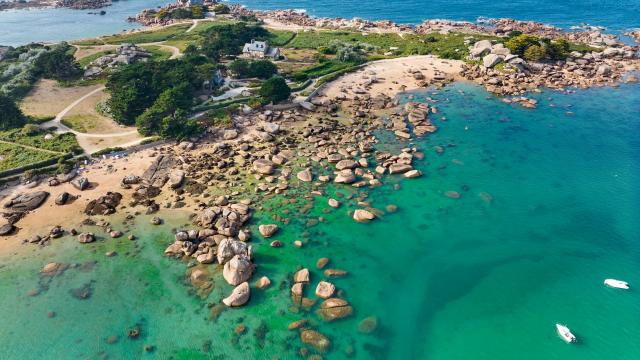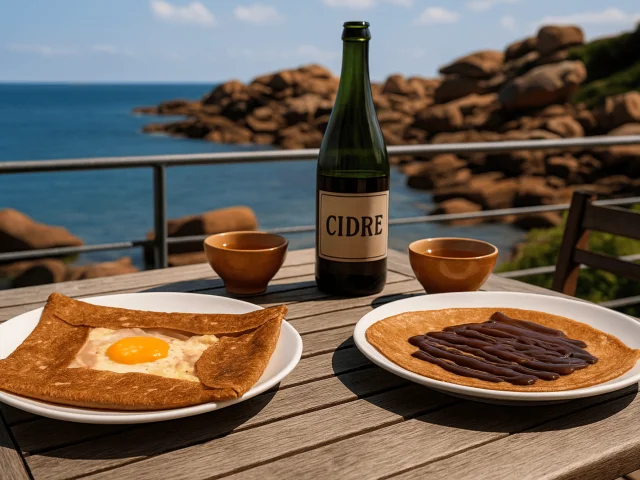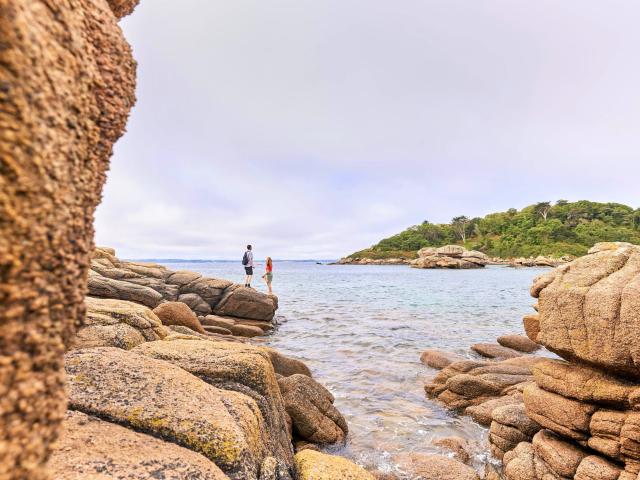Between places of worship and legends
stones have faith… and long memories
While the Carnac alignments are a sight to behold, with their thousands of menhirs in a tight row, the Pink Granite Coast prefers to play the intimacy card. The megaliths hide like well-kept secrets, tucked away in a corner of the moor, a fold in the woods, or at the bend of a discreet path. Sometimes you have to search a little… but these Breton stones know how to reward the curious.
Some of these megalithic monuments, erected several thousand centuries ago, still bear traces of parietal sculptures: signs that our ancestors did not place these blocks of granite at random. Between places of passage, meditation and ritual, these stones tell the story of a Neolithic spirituality whose echoes still resonate.
And then there are the legends. In Brittany, they stick to the stones like salt to the skin. Stemming from Celtic beliefs passed down from generation to generation, they attribute supernatural powers to the megaliths, linking them to the gods and the ancestors.
Houses of the Korrigans
Many legends surround these standing stones. It is said that the korrigans, those mischievous little creatures, hold their wild dances here. Brittany’s menhirs and dolmens are an inexhaustible source of inspiration for fantastic tales and stories!
Stones to lift… and mysteries to uncover
A menhir weighing several tonnes cannot be erected by hand. Erecting these imposing monuments required much more than brute strength: a well-honed social organisation, technical know-how and, no doubt, a good dose of collective determination. These megaliths are proof that over 3,000 years ago, our ancestors already knew how to mobilise human resources over the long term. A real building site… on the scale of the Stone Age!
And yet, despite the best efforts of archaeologists, the construction of these monuments remains something of a mystery. How did they move these enormous blocks of stone for miles on end, sometimes over steep terrain? The most serious clues point to a rudimentary system of lifting and pulling, using logs, ropes and… patience. A lot of patience.
 Kerguntuil Studio Jezequel 1
Kerguntuil Studio Jezequel 1